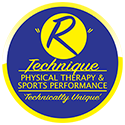Addresses the wide array of issues that concern individuals as they experience normal aging, focusing on older adults. Aging does not have to include withdrawing from the activities you love, due to pain or stiffness when moving. R Technique provides evidence-based care that meets the needs of each individual patient. R Technique is dedicated to providing patients with the best treatment and functional outcomes.
What Is Geriatric Rehabilitation?
There are several injuries and disorders that are particularly prevalent among older individuals. Geriatric Rehabilitation provides relief for the symptoms of these conditions to enable sufferers to get back to their active lifestyle. These conditions affect different areas of the body and require individualized treatments.
Conditions
Geriatric disorders cover a large spectrum of conditions, each with their own specific symptoms and cause. Some of the most common geriatric disorders treated with physical therapy include:
- Osteoporosis
- Osteoarthritis
- Rheumatoid Arthritis
- Balance Disorders
- Parkinsons Disease
- Joint Replacement Rehabilitation
How Can Physical Therapy Help?
Physical therapy treatment from R Technique can help patients regain control of their active life. Physical therapy is a medical specialty that uses exercises, manipulations, and specific equipment to help patients regain or improve mobility and function.
Geriatric Rehabilitation
Your physical therapist will perform a thorough evaluation to assess and determine the following:
- Joint: a series of measurements will be performed to determine joint mobility and integrity
- Strength: resisted testing is performed to determine if there is associated weakness or strength imbalances
- Flexibility: range of motion measurements will be taken to determine if there is reduced joint movement
- Technique and ADL: the therapist will review what activities you have difficulty with and will help you make modifications in technique to reduce stress on the involved joint.
- Gait, Balance and Alignment: the therapist will assess your gait and balance on even and uneven surfaces. An assistive device such as a cane or walker may be indicated to improve safety, gait and reduce stress on the affected joint.
Physical Therapy Treatments
- Manual Therapy: hands on care including soft tissue massage, stretching and joint mobilization by a physical therapist to improve alignment, mobility, and range of motion. The use of mobilization techniques also helps to modulate pain.
- Therapeutic Exercise: including stretching and strengthening exercises to regain range of motion and improve the strength of the affected muscles to support, stabilize and decrease the stresses placed on joint cartilage.
- Neuromuscular Re-education: to restore stability, retrain affected muscles and improve movement techniques and mechanics (for example, walking, kneeling, squatting and stair climbing) of the involved extremity to reduce stress on the joint surfaces in daily activities. Gait and balance training may be indicated in those individuals who have problems with walking.
- Modalities including the use of ultrasound, electrical stimulation, ice, cold, laser, and others to decrease pain and inflammation of the involved joint.


